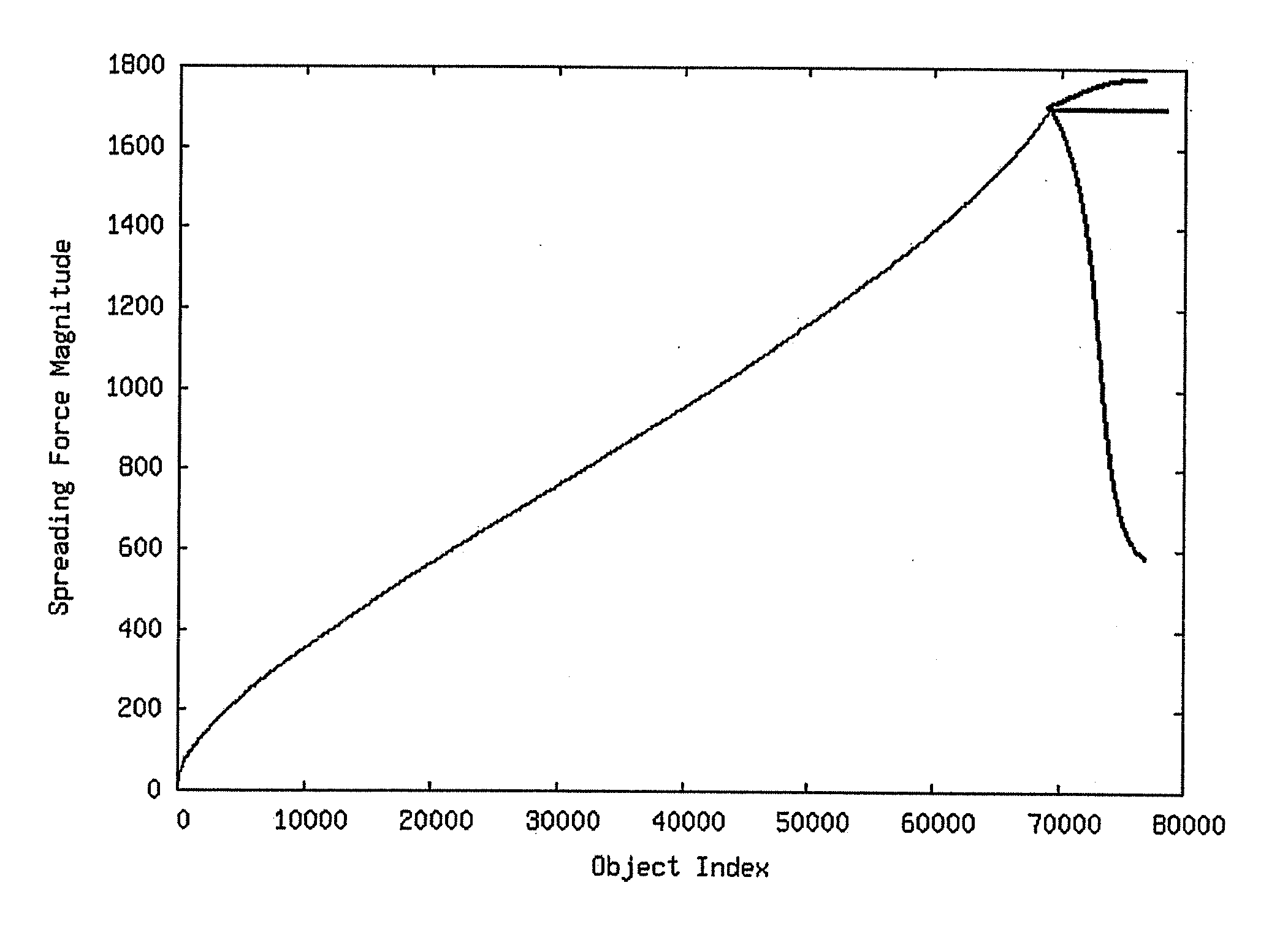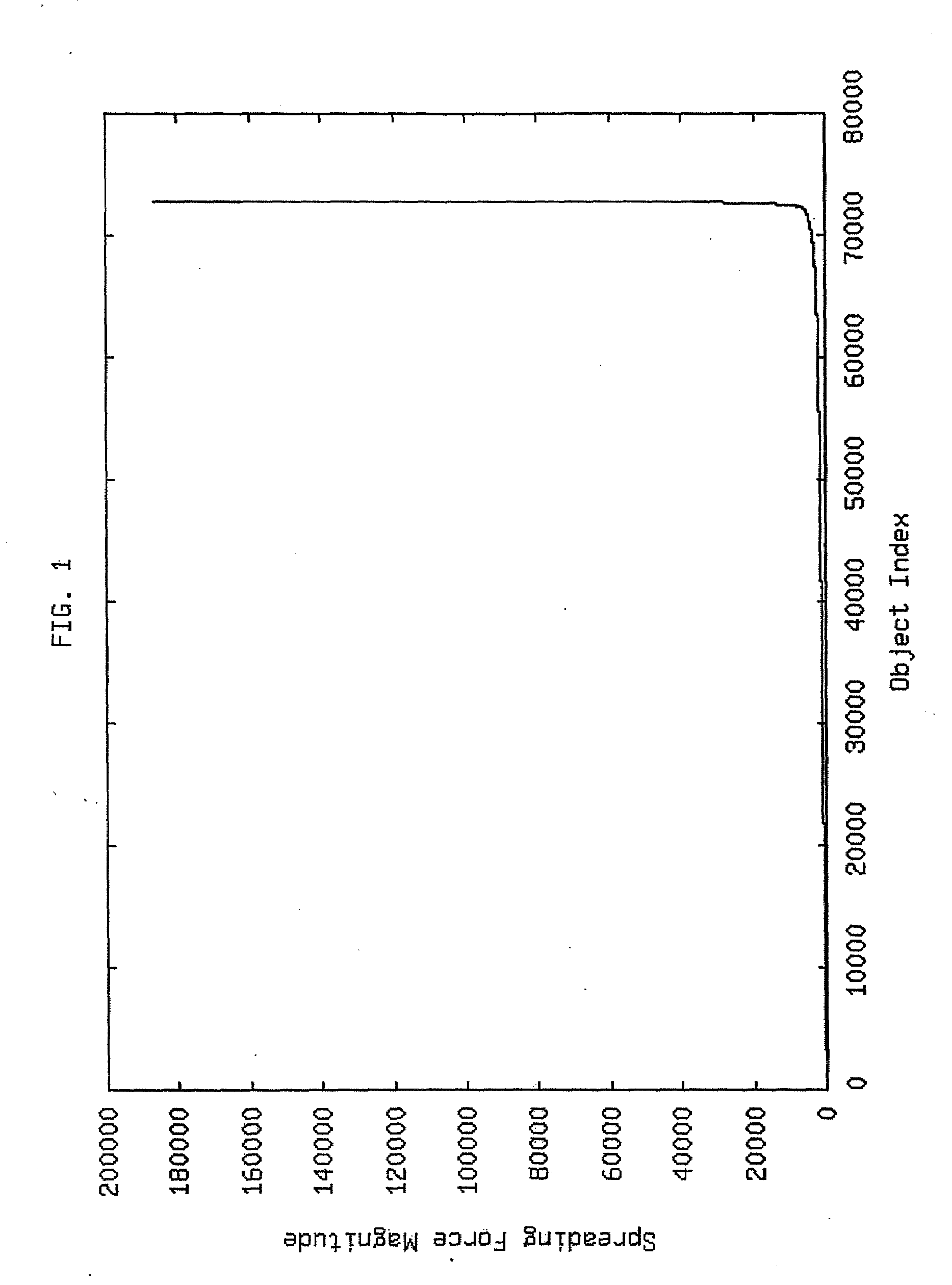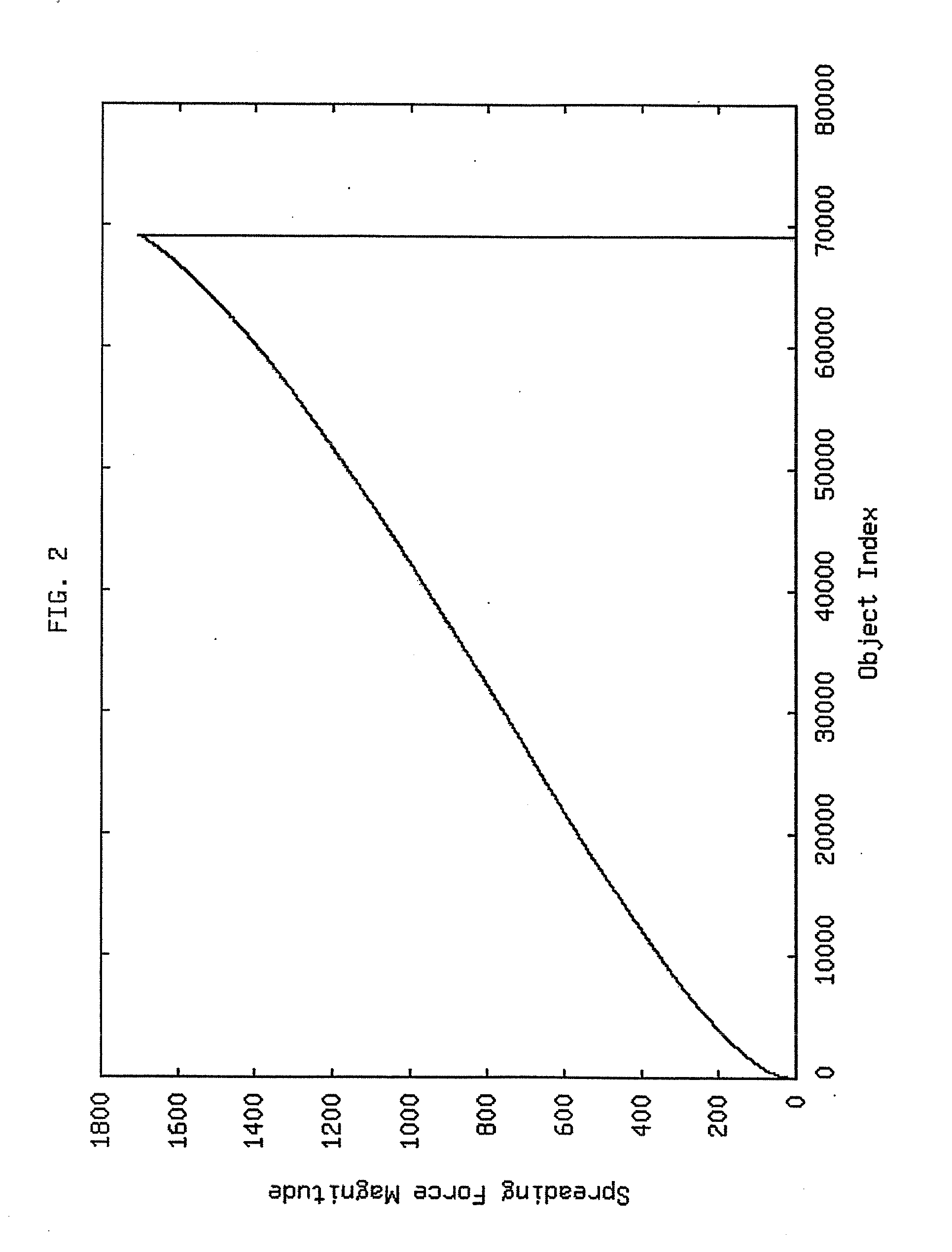Method to reduce the wirelength of analytical placement techniques by modulation of spreading forces vectors
- Summary
- Abstract
- Description
- Claims
- Application Information
AI Technical Summary
Benefits of technology
Problems solved by technology
Method used
Image
Examples
Embodiment Construction
[0014]An analytical placement technique that seeks to have objects (or cells) of a chip spread around a placement area to resolve the overlaps amongst themselves and result in a legal, non-overlapping placement is presented. A variety of techniques like Diffusion, Cell-Shifting, and others can be used for this spreading. These techniques bin the placement area and determine the utilization of each bin. The utilization of a bin is defined as the total area of all the objects within the bin. This gives a measure of the current placement congestion. The objects are then shifted around the placement area based on their respective bins and its utilization. Spreading techniques employed during analytical placement try to maintain the relative positions (or ordering) of the objects that were obtained after the initial non-linear program solve step.
[0015]Spreading techniques only give a target position for an object based on the placement utilization in and around the bin of the object. To ...
PUM
 Login to View More
Login to View More Abstract
Description
Claims
Application Information
 Login to View More
Login to View More - R&D
- Intellectual Property
- Life Sciences
- Materials
- Tech Scout
- Unparalleled Data Quality
- Higher Quality Content
- 60% Fewer Hallucinations
Browse by: Latest US Patents, China's latest patents, Technical Efficacy Thesaurus, Application Domain, Technology Topic, Popular Technical Reports.
© 2025 PatSnap. All rights reserved.Legal|Privacy policy|Modern Slavery Act Transparency Statement|Sitemap|About US| Contact US: help@patsnap.com



